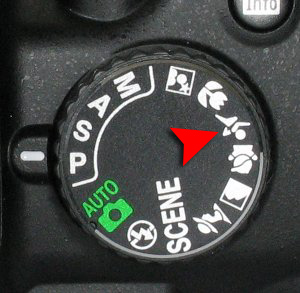|
Needless to say the craziness of Summer has begun. 2 years ago if you had asked me if I would be running to something 4 or 5 nights a week I would have told you are C R A Z Y! I said, "I would never do it!" Well guess what? Between my kids and myself lately I am doing it. Some weeks its only 2 or 3 nights and others its 4 or 5. The reality of it is 2 boys in sports, 1 in (2) sports, that there is going to be practices and there is going to be games. Then you add in my commitments and it is crazy town! A good crazy, but non the less our calendar is full. I have so many sessions waiting to hit the blog, but I thought I would return with a few tips on photographing all those sports! 1. TAKE YOUR GEAR Take a few extra minutes to check your equipment before you leave home. Make sure your battery is charged and your memory card is in place (with lots of room to add new photos). A camera with a decent zoom is a must! 2. KNOW YOUR CAMERA'S SETTINGS Shooting in manual mode will definitely give you more control, but if you shoot on the automatic modes of a dSLR or a point-n-shoot, know what the Sports mode does. I like to call the Sports mode “The Running Man”. In Sports mode, a few things will or won’t happen – your camera is operating differently than when it is just on automatic (green square). By using the Running Man, you are giving your camera a lit bit of information about what you are trying to do.
A little disclaimer – all the images in this post were shot on Manual, not Sports mode. Shooting in Manual modes, gives you more control over the settings to help control tricky shooting conditions and gives you flexibility to adjust the shutter speed, ISO, and depth of field. If you want to learn to use your camera this way consider my Snap Shop Workshop. 3. CONSIDER THE TIME OF DAY Soccer games usually are in the morning so take note of where the sun is and make sure the sun is to your back when shooting. This will ensure you have your shutter speed on it’s maximum without having to worry about exposing for the faces of the players if you were shooting into the sun. Shooting a late day game is a little easier as you usually don't have to worry about the direct sun, but also position yourself so that you are not directly facing the sun. 4. INCLUDE THE BALL The eyes and the ball are two of the most important compositional elements in a shot. The shot has more feeling when you capture the expression on the players face. However there are times when you can't get both in a shot and it still works. 5. TAKE SHOTS THAT TELL THE STORY The group huddle, cheering from the bench, high fives, the look on the players’ faces when a goal is scored…these are all integral parts of the story. Capturing emotions adds to the story! These pictures are just as important as the action shots…perhaps even more so! They show team camaraderie and bonding, which is what the kids tend to remember anyway. Thank you for stopping by today. I hope these tips will help you when capturing your athletes on the field this summer!
~ Monique |
Archives
April 2020
|






